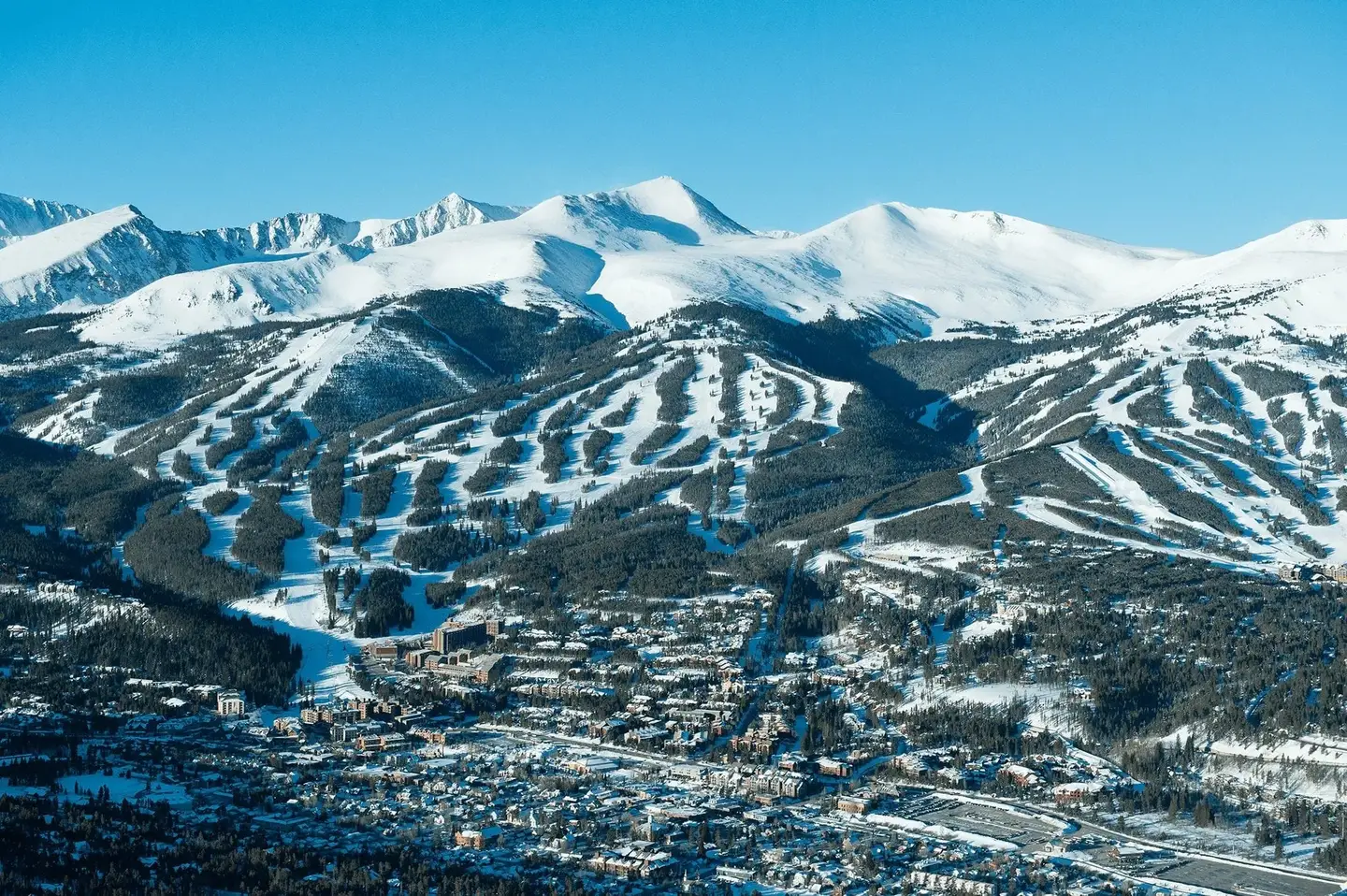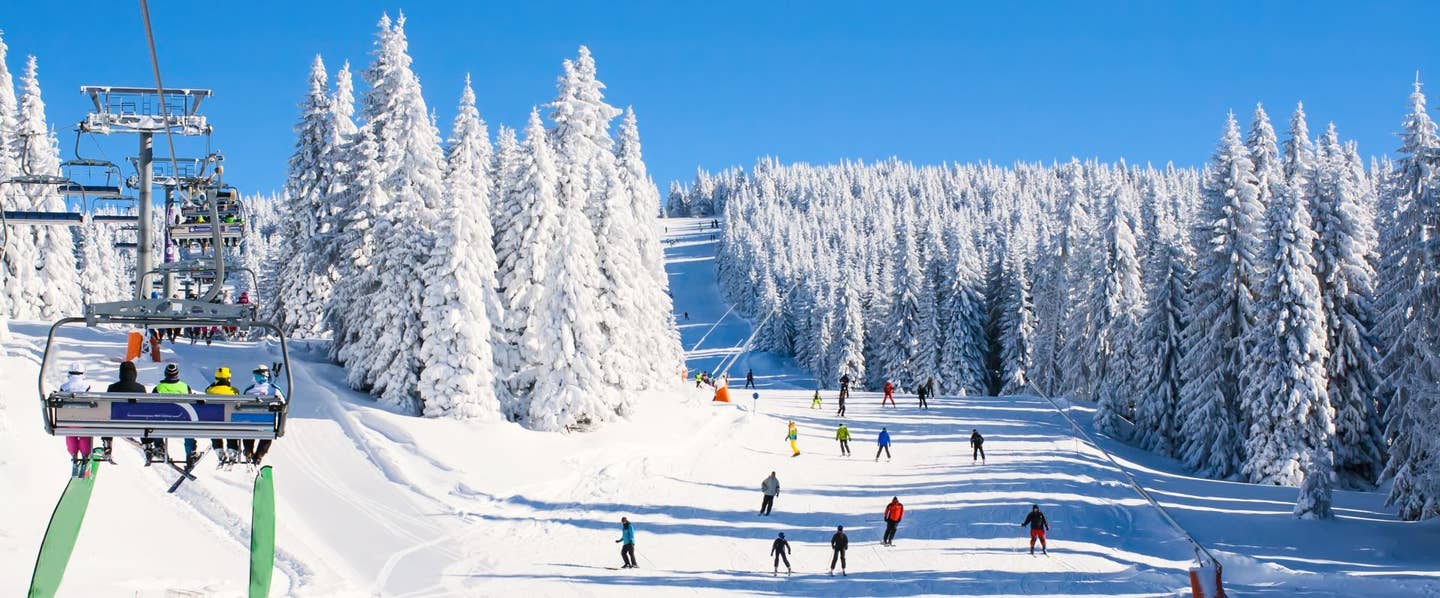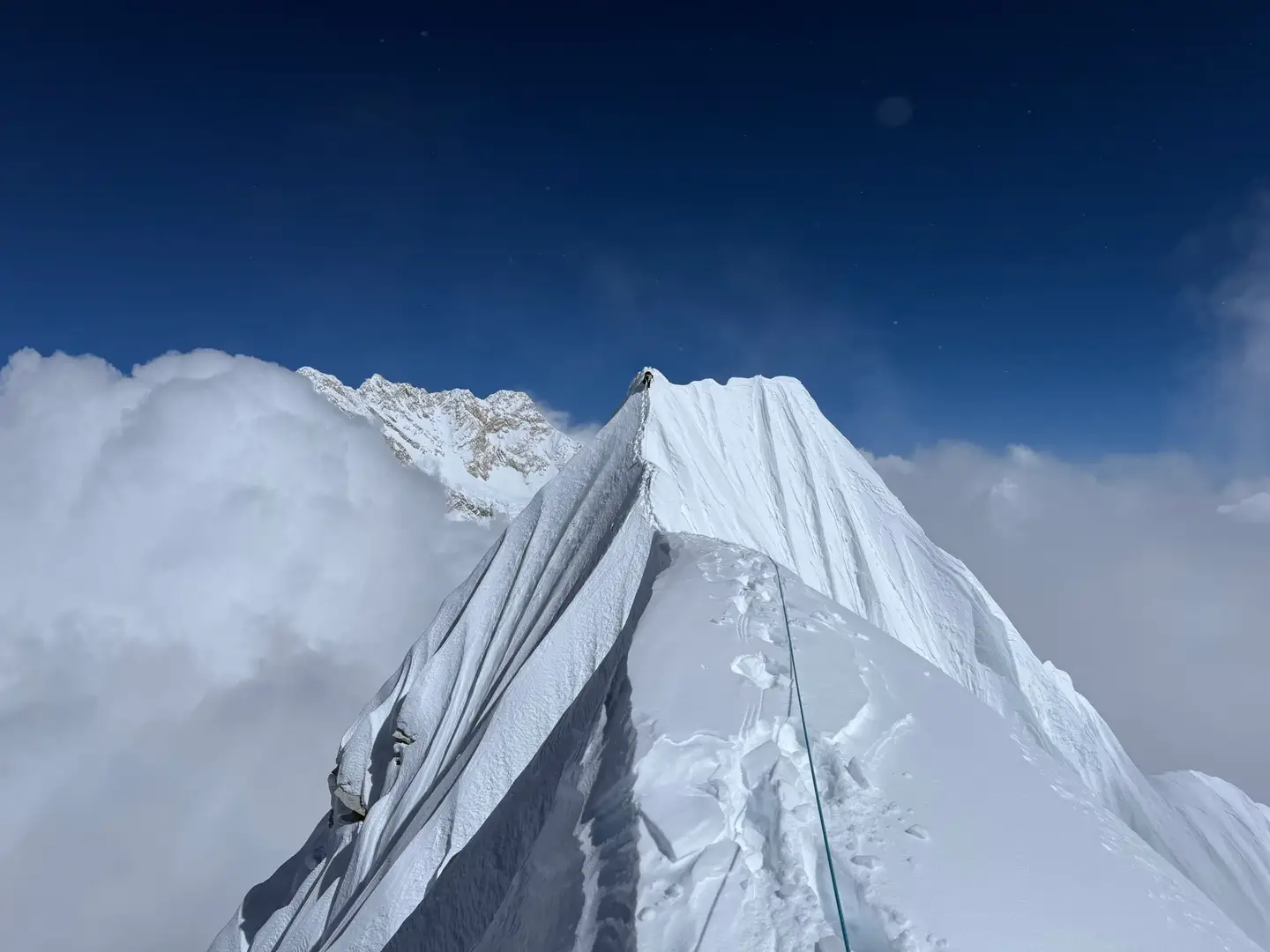Stoke the Fire Athlete Edits: Christina Lustenberger
Popular Stories
With the whirlwind of events that threatened this year's ski season, TGR got creative when deciding what locations would be featured in Stoke the Fire. Among those were the great ranges of B.C. where local legend Christina Lustenberger took charge. One of the greatest alpine skiers of our generation, Lusti never shies away from a good thrill, especially if it involves first descents. This year the North Face athlete did just that, dominating massive faces and adding new descents to her list. She guided the TGR team through what she calls her backyard - Invermere, the Purcell Mountains, and the Mica Heli tenure near Revelstoke. We can’t wait to see Lusti do her thing in the new film and recently caught up with her to hear some more about her experience with this year’s film, one of her most special lines to date, and shredding at Mica Heli. Stoke the Fire tickets are on sale now, find a tour stop near you!
TGR: There was definitely no preparation for the craziness we’ve experienced this year, how did you see the ski community react to the setbacks brought on by COVID-19?
Christina Lustenberger: I guess for me and the rest of the crew that's in Canada like Ian, McNutt and Sammy, working with a company like TGR who’s based in Jackson and the borders being closed we had to start pivoting and thinking of projects that are close to home and were realistic with all of the COVID protocols. We started building our crew up here and looked at trips and objectives that were closer to home and realistic for such a crazy winter like last year.
TGR: With this in mind, did you have any goals for yourself going into the season?
CL: Yeah, I just went with the idea that borders weren’t going to open, I wasn’t going to travel internationally or to the states, so it was kind of one of those seasons that made me realize I could really put a lot of energy into projects that are close to home. They were projects that I’ve been thinking about for a really long time but have always been pulled overseas or pulled onto somebody else’s projects, so I really wanted to dive into the projects that were really near and dear to my heart and authentic to my upbringing as a skier in British Columbia. In a way it was a really cool opportunity for myself to just pick off some lifelong goals and things that I wanted to ski last season.
TGR: We saw you conquer a first descent on Mount Nelson with another TGR OG Ian Mcintosh during this season, can you tell us about that experience for you?
CL: I think that ski line in particular was something really special to both Ian and I because we grew up in Invermere in the Columbia Valley and it’s a peak that you can see from town. I could see it from the house I grew up in and the ski hill we learned how to ski on, so it’s this iconic peak in the Invermere Valley. I think we had both somehow imagined when we were children that maybe there’s a possibility to ski the big East face. We had talked about it for probably five years now, but we were always being pulled to different places. I think with such an intimidating line it’s easy to come up with excuses like “The snowpack isn’t right this year” or “I’m going to ski this instead.” It’s something really intimidating to try to pull off and you want to have a lot of time so you can wait for just that right moment when the line is in really good condition to ski it and be safe. Putting energy into that and pitching that to TGR and them being psyched on us trying it this season was really cool. I’ve been pitching that line to different companies for probably six years now so to finally have a company that was psyched on filming it was great.
TGR: What was it like doing this descent with another B.C. native?
CL: Ian and I have come full circle. We’re both on the North Face team now which is super cool and we both film with TGR. We grew up ski racing together on the same ski team so it was just really cool to share that experience with him because it’s not just some other athlete that’s going to ski a rad line, it was something that he was emotionally invested in: the mountain and the valley. I think that brings a lot of richness into pulling it all together and the day it happened we couldn’t have asked for a better day or better conditions. I think that’s what’s really cool too is to do it in good style and just pull it off. It was a very memorable experience for both Ian and me.
TGR: That sounds like such an awesome experience for both you and Ian, and we can all understand feeling held back by intimidation. That being said, what is your mental process for dropping into something intimidating like that?
CL: There’s a huge mental process and it doesn’t happen overnight or even in one season. I think for Ian and I to ski that line there was a full career of experiences and learning and processing to get us to that point. Even then, it’s about having the right teammate or partner to go there with and that you feel comfortable with. I think we both just came to a place in our ski careers where we’ve been training different snowpack courses (I’m a ski guide, he’s a professional skier doing his ski guiding courses as well) so that builds a lot of different mountain knowledge and refining your mountain craft, which allows yourself to move through different mountain landscapes in a safe and calculated way. When you go to try something like this, it’s not just on a whim. It’s super calculated and thought out.
When Ian and I arrived in Invermere we were there for ten days and on the first day we went up to Panorama Resort and skied to the summit. Ian had binoculars and I had a camera and we were just scouting the face from the ski hill. We looked at the face and determined if it had enough snow--- the snowpack in that area is a lot different than where Ian and I live now. It’s a more generous and stable snowpack where we live whereas in the Purcells it’s more influenced by the Rocky Mountains. The timing of getting good conditions on that face was everything because we wanted to ski it in dry cold conditions. The first day we went and scoped the face and that afternoon we hired a fixed wing pilot to fly us around the peak so we could see the angle and a more in depth view of the ski descent. We were also able to see the approach because we needed to come up this big valley and then climb the south face to reach the summit. We spent the next week skiing around the area, warming ourselves up, checking the snow, skiing other lines, and then we just had to wait for the right window while we were there.
Sign Up for the TGR Gravity Check Newsletter Now
It all just came together in a 10-day trip, but it wasn’t just that trip. Ian and I had been talking and thinking about the descent for our whole lives. The first time I looked at Mount Nelson I wondered if anybody skied it or if it could be skied, and just knew I wanted to do it. I don’t even think I knew what backcountry skiing was at that point, it was more just that young childhood dream. I think goals now and things we come up with are so driven by exterior motives, whereas this one is so true and so authentic to our culture and where we grew up, so I think that’s pretty special. To me the most rich experiences are the ones that are close to your home and in your backyard.
TGR: This isn’t your first film with TGR, was there anything that set Stoke the Fire apart from the others you’ve been involved in?
CL: The first year filming with TGR we went to Norway, last year we were in Pemberton which was really cool because I’ve skied around Pemberton but never filmed there. Ian was really proud to show us around his backyard there and it was a lot of flood access stuff. This year’s film was really cool because I kind of felt like I was driving it a bit more. We also went to Mica Heli this year which was cool too because it’s just north of Revelstoke.
TGR: Anything you like to do when you’re not skiing?
CL: The winters are pretty full on with skiing and guiding, but in the summer I really love trail running and climbing. We’ve also been working on a house so every summer we’ll pick one or two projects to renovate, which is really nice and rewarding. It totally changes up the life from skiing to building something and creating something and making it better. Right now in Revelstoke there are so many fires that you can’t even see the mountains and the smoke is so thick in town. It’s so gnarly, it’s actually nice to have an inside job right now because the air is so bad.
TGR: What can we expect from you next season?
CL: I’m hopeful that we’ll be able to travel a bit more, but I’d like to still roll with what I’ve been doing and filming/skiing off of last season. I really like bringing the TGR crew into these big ski mountain areas and steep ski lines. It’s really exciting and it’s really challenging going there by yourself, and especially so with a film crew. It adds a whole other level of logistics and pressure, but it’s really rewarding to show that style of skiing especially as a Canadian female who’s really pushing steep skiing. There’s a line we were gonna film last spring with TGR that with conditions didn’t shape up, so I’d love to continue trying to pick off big un-skied lines in B.C.



